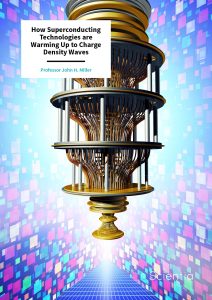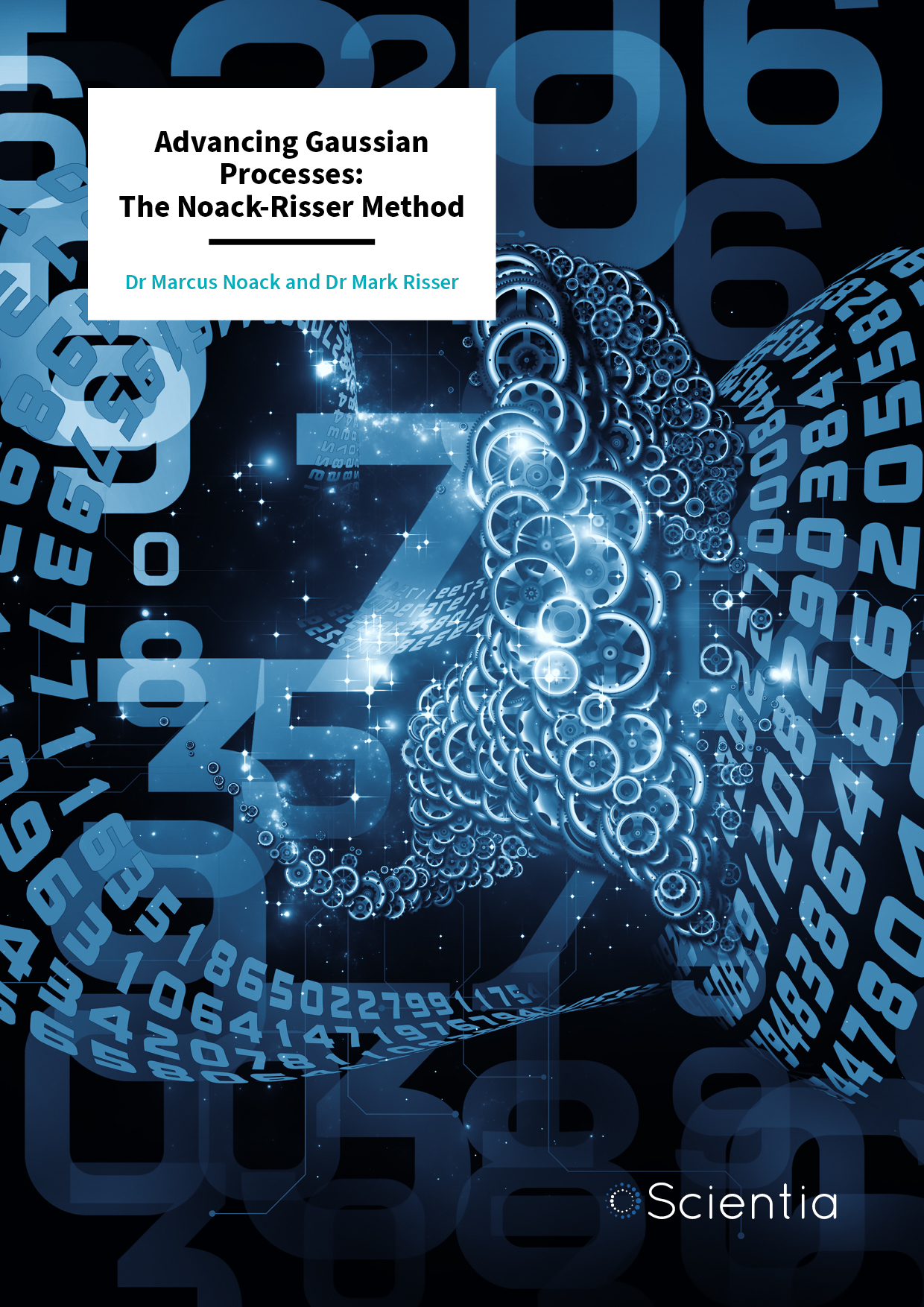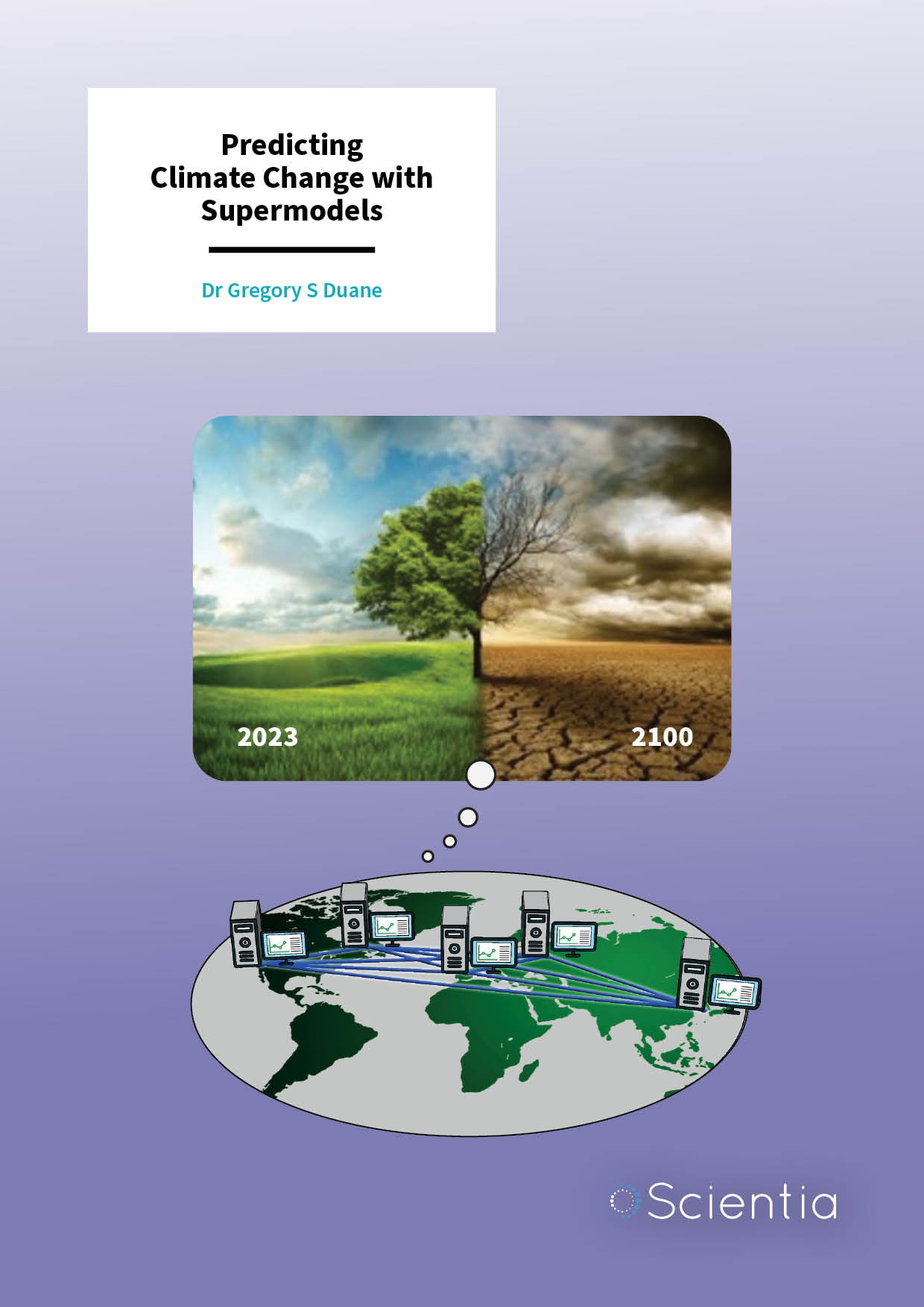Professor John Miller | How Superconducting Technologies are Warming Up to Charge Density Waves
Superconducting quantum computers offer exciting potential for the future but are currently limited by their low operating temperature. Professor John Miller and his team at the University of Houston have been working on these problems, looking at how we can operate superconducting quantum systems at higher temperatures and considering the properties of charge density wave materials. He also highlights the applications of this work in quantum information processing.
What’s So Cool about Superconductivity?
We are familiar in our everyday lives with classical computers completing computation using ‘bits’ –binary digits, either a zero or a one. More recent quantum computers use quantum bits – or ‘qubits’. These qubits can now be both zero and one – they exist simultaneously as a mix of both states, forming a quantum superposition. This superposition allows us to hold more information than a collection of classical bits, potentially allowing us to compute increasingly complex problems much faster.
Researchers are working on lots of different potential ways to create qubits, but perhaps the most promising candidates are superconducting qubits. Superconductivity is a unique phenomenon that occurs when we cool metals down to very low temperatures, close to absolute zero. Usually, metals have some resistance to the flow of electrical current, but at this very cold temperature, metals enter a superconductive state where they have a very low resistance to the flow of direct current.
This superconductivity can help scientists create qubits through the creation of a device called a Josephson junction, which consists of two layers of superconducting material with a thin layer of non-superconducting metal in between. In this device, qubits can be created as a result of an electron tunnelling between the two superconducting layers – this is when an electron passes through an energy barrier that, if we didn’t consider it to be a quantum particle, it wouldn’t have sufficient energy to overcome.
One of the current limitations of this scheme is the fact that superconducting qubits usually require incredibly cold temperatures. Professor John Miller of the Texas Centre for Superconductivity at the University of Houston has looked for a solution in charge density waves. Professor Miller and his team have researched how charge density waves can occur and analysed their properties, as well as considering how, in the future, they could allow new hybrid quantum devices to operate at higher temperatures. This could lead to exciting possibilities for quantum computing and information processing.

What are Charge Density Waves?
Charge density waves are systems of electrons and phonons. A phonon is a packet of vibrational energy, and in these charge density waves, the phonons are linked with the electrons in the metal. As a result of these links, waves occur at some transition temperature, known as the Peierls transition temperature, when the regular lattice structure of the particles in the material is broken and oscillations occur. This system can lead to electrons being transported in the material, with unique quantum properties.
Charge density waves show this electron transport at higher temperatures and at standard room pressures. For example, Professor Miller and his team highlight how charge density waves form in different materials at different temperatures – some occur at room temperature, some at above the boiling point of water, and others at temperatures above that achieved in a typical kitchen oven.
Properties of Charge Density Waves
Professor Miller’s research delves into the properties of charge density waves, looking at them as the flow of these electron-phonon links in a quantum fluid. They start with a theory of time-correlated single-electron tunnelling –where just one electron undergoes quantum tunnelling – within a junction of some capacitance, or a junction that has some amount of capability to store electric charge. By looking at how the charge, current and voltage vary within these junctions, Professor Miller and his team can form a picture where there is a threshold voltage, or Coulomb blockade, below which oscillations do not occur. Above this voltage, there are oscillations, and the current in the system scales with the oscillation frequency.
Building on this model of single-electron tunnelling, Professor Miller and his colleagues have developed a picture of the tunnelling that occurs where there are microscopic quantum solitons. Solitons (or solitary waves) are waves with a single peak, which maintain their shapes over long distances and propagate with a constant velocity. We can view charge density wave deformations as quantum solitons. When these are tunnelling within the junctions, they have a lower threshold voltage than what we would typically expect in classical sliding of the charge density wave.
Below this Coulomb blockade, Professor Miller and his team describe how there is no creation of these solitons; however, above this threshold, we start to see tunnelling effects. As we surpass the threshold, charges begin to shape into chains to form soliton droplets with quantum fluid properties. This means that the system will display quantum mechanical properties, such as tunnelling, and this quantum fluid will begin to ‘flow’ in a drip-like way.
Professor Miller and his colleagues have also considered the effects of narrow band noise, or noise that arises as a result of unwanted energy transitions that occur when charges are being built up in the junction. Narrow band noise has a range of harmonics, or differently shaped oscillations, which it can introduce into the system. To understand this effect further, the team uses Fourier analysis, which allows them to decompose these oscillations into a set of frequencies to analyse the harmonic content.
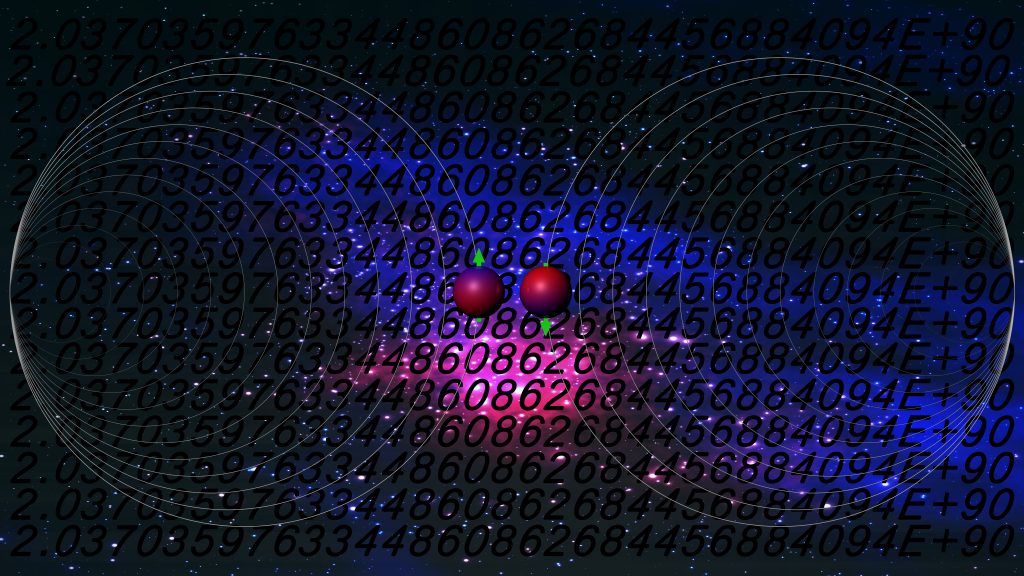
Impact of Charge Density Waves on Quantum Systems
As well as helping us to understand and define the properties of charge density waves, Professor Miller has also considered their impact in hybrid quantum systems. To allow for the potential of superconducting qubits at higher temperatures, scientists propose using nonlinear dielectric–superconductor qubits. Dielectric materials are typically insulating, but when an electric field is applied, the charges shift in response to the field. As a capacitor has a positively charged plate and a negatively charged plate, increasing the electric field causes the negative charges in the material to orientate themselves towards the positive plate, and the positive charges become aligned with the negatively charged plate. The extent to which this re-orientation occurs is known as the polarisation.
Charge density waves are one possible solution for the dielectric component of this qubit system alongside quantum paraelectric materials. Professor Miller and his team suggest how the circuits for creating these qubits could be designed, using a superconducting loop and introducing the nonlinear dielectric component to act as a nonlinear capacitor. They also develop different designs for structuring the nonlinear capacitors, for example, using a linear dielectric as a substrate to construct the capacitor on, and then sandwiching the nonlinear dielectric material between two thin superconducting films.
Using these nonlinear dielectric-superconductor qubits, Professor Miller analyses the effects of this system and their energy levels. As the electric field changes, charges shift around in the capacitor, which alters its polarisation. This change in polarisation, in turn, affects the voltage in the circuit. This then leads to unequally spaced energy levels in the system. Having unequally spaced energy levels means we can clearly differentiate and label a ‘0’ and ‘1’ state to form the basis of our qubit in this system.

Exciting Possibilities for Charge Density Waves
Whilst there is still work to be done in developing technologies around the unique properties of charge density waves, Professor Miller points to numerous ways in which they might impact the future of quantum information. For example, the operating temperatures of charge density waves are higher, so they may not require the same extreme cooling that other quantum systems do.
Charge density waves may also have an application in quantum learning and memory. This could be useful in quantum reservoir computing, where there is a reservoir of artificial neural networks, or a machine learning system which uses a set of interconnected nodes, mirroring the structure of neurons in the brain, which complete a series of algorithms to find relationships in data sets.
Current simulations suggest that a quantum reservoir of just a few qubits could outperform existing devices, and Professor Miller also suggests how future devices could use charge density waves coupled to artificial neural networks, or perhaps even use the charge density waves to implement the neural networks also. This offers the possibility of quantum machine learning at higher temperatures.
Whilst the quantum applications of this technology may still be under development, nonlinear dielectrics may also be useful in creating precise sensors, for example, within magnetic resonance imaging or MRI, commonly used in medical diagnosis.
Professor Miller and his colleagues’ research offers both potential for improving devices today, as well as exciting future possibilities for quantum technologies. The possibilities for charge density waves are plentiful, from quantum machine learning to having quantum devices that can operate at higher temperatures. Professor Miller’s research into charge density waves and superconducting qubits is driving the path forward for the quantum devices and computers of the future.
SHARE
DOWNLOAD E-BOOK
REFERENCE
https://doi.org/10.33548/SCIENTIA922
MEET THE RESEARCHER
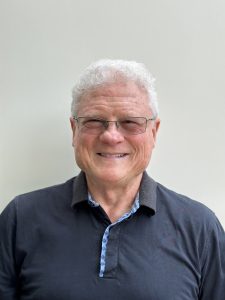
Professor John H. Miller
Department of Physics
University of Houston
Houston, TX
Texas
Professor John Miller received his PhD in Electrical Engineering from the University of Illinois at Urbana-Champaign, where his research focused on condensed matter physics. Following a postdoctoral fellowship and various professorships across America, he became the Director for the Quantum Materials and Devices laboratory at the Texas Centre for Superconductivity at the University of Houston in 1994. He became a Professor of Physics, also at the University of Houston, in 2006. Professor Miller’s research focuses on quantum transport in charge density waves, superconductivity, and materials, such as considering metal-insulator transitions around the Mott point and oxide depositions. Alongside his publications and research accolades, Professor Miller has chaired the research committee for the Texas Centre for Superconductivity since 2007.
CONTACT
E: jhmiller@uh.edu
W: https://uh.edu/nsm/physics/people/profiles/john-miller/
KEY COLLABORATORS
Dr Martha Y. Suárez-Villagrán, University of Houston
Dr Jarek Wosik, University of Houston
Dr Byron Freelon, University of Houston
Mr Johnathan O. Sanderson, University of Houston
FUNDING
University of Houston Grants to Enhance and Advance Research (GEAR) programme
Texas Center for Superconductivity at the University of Houston
FURTHER READING
JH Miller, MY Suárez-Villagrán, JO Sanderson, J Wosik, Hybrid Quantum Systems for Higher Temperature Quantum Information Processing, IEEE Transactions on Applied Superconductivity, 2023, 33(5), 1-4. DOI: https://doi.org/10.1109/TASC.2023.3241131.
JH Miller, MY Suárez-Villagrán, Quantum fluidic charge density wave transport, Applied Physics Letters, 2021, 118(18), 184002. DOI: https://doi.org/10.1063/5.0048834

REPUBLISH OUR ARTICLES
We encourage all formats of sharing and republishing of our articles. Whether you want to host on your website, publication or blog, we welcome this. Find out more
Creative Commons Licence (CC BY 4.0)
This work is licensed under a Creative Commons Attribution 4.0 International License. 
What does this mean?
Share: You can copy and redistribute the material in any medium or format
Adapt: You can change, and build upon the material for any purpose, even commercially.
Credit: You must give appropriate credit, provide a link to the license, and indicate if changes were made.
SUBSCRIBE NOW
Follow Us
MORE ARTICLES YOU MAY LIKE
Dr Olalla Castro-Alvaredo | Measuring Entanglement: Symmetry-Resolved Entropy
Dr Olalla Castro-Alvaredo of the City University of London (UK) and her collaborators are advancing our understanding of an important phenomenon of quantum mechanical systems known as entanglement and, especially, its mathematical measures. Symmetry-resolved entanglement entropy is one such measure. Their study focuses on special quantum states which are excited with respect to a ground state. The research shows how the entanglement amongst quantum particles can be measured and assesses the contribution to the entanglement of quasiparticle excitations, particularly in the presence of additional symmetries.
Dr Tsun-Kong Sham – Dr Jiatang Chen – Dr Zou Finfrock – Dr Zhiqiang Wang | X-Rays Shine Light on Fuel Cell Catalysts
Understanding the electronic behaviour of fuel cell catalysts can be difficult using standard experimental techniques, although this knowledge is critical to their fine-tuning and optimisation. Dr Jiatang Chen at the University of Western Ontario works with colleagues to use the cutting-edge valence-to-core X-ray emission spectroscopy method to determine the precise electronic effects of altering the amounts of platinum and nickel in platinum-nickel catalysts used in fuel cells. Their research demonstrates the potential application of this technique to analysing battery materials, catalysts, and even cancer drug molecules.
Dr Marcus Noack and Dr Mark Risser | Advancing Gaussian Processes: The Noack-Risser Method
Dr Marcus Noack and Dr Mark Risser, researchers at Lawrence Berkeley National Laboratory, have recently proposed a significant advancement in the area of machine learning and data science that promises significant computational improvements: the enhancement of exact Gaussian Processes for large datasets, significantly improving data analysis capabilities for samples even beyond 5 million data points.
Dr Gregory Duane | Predicting Climate Change with Supermodels
Our universe is comprised of fascinatingly complex systems. Systems such as the Earth’s climate can, at first glance, seem far too complex and chaotic to predict accurately. Dr Gregory Duane and his team at the University of Colorado have been developing complex computational models that can learn from past data, providing us with intriguing insights and more accurate predictions about the future.

